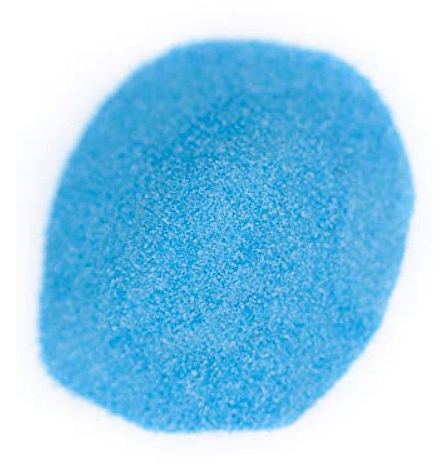
Chemicals are, for the most part, categorized into inorganic compounds and organic compounds. The expression “water of crystallization” is rarely applied to organic compounds, since most of them are not water soluble, and if they are, few even of those form crystals with water.
What IS Water of Crystallization?
A high percentage of water-soluble inorganic salts form crystals that include water in their crystal lattice. An example of a salt, with and without water of crystallization is cupric sulfate.1 Such salts, deprived of water content, are termed anhydrous. In our example, we might speak of copper sulfate anhydrous.2
Quantity of Water

Hydrated copper sulfate includes 5 molecules of water in its crystalline form. Hence, it is called copper sulfate pentahydrate, which is written Cu(SO4)·5H2O.
The number of water molecules associated within a given salt’s crystal varies from salt to salt. For instance, magnesium sulfate associates with 7 molecules of water, hence it is called magnesium sulfate heptahydrate, written Mg(SO4)·7H2O.
Sodium sulfate, on the other hand, has 10 molecules of water in its crystal lattice. We write, Na(SO4)·10H2O.
Sometimes a salt can form more than one hydrate, depending upon the circumstances. In our example of sodium sulfate above, for instance, it is possible to produce a heptahydrate as well.
Why Does It Matter?
There are a host of reasons why water of crystallization is of interest to the chemist. Doubtless the reader can think of some. However, the student – especially the beginning student – should pay attention to one reason in particular. Molecular weight.
In performing simple stoichiometric reactions, the molecular weight of the reactants and products is of prime importance in calculating the quantities of each substance needed. Consider, for instance, the reaction,
CuSO4 + 2 NaOH → Cu(OH)2 + 2 NaSO4
What is the required amount of copper sulfate to totally neutralize the sodium hydroxide? Well, let’s put in some real numbers to arrive at our answer! The atomic weight of sodium is 23. Oxygen is 16. Hydrogen is 1. So one mole of sodium hydroxide is 40 grams.
If we wish to neutralize that quantity, then we need a mole of copper sulfate. The atomic weight of copper is 63.5. Sulfur is 32. Oxygen is 16. One mole of CuSO4 is thus 159.5 grams.
So we get out our bottle of copper sulfate and weigh out that amount of copper sulfate, right? WRONG. Why? Because a bottle containing copper sulfate almost always contains Cu(SO4)·5H2O. Its molecular weight includes the weight of the water. The weight of 5 water molecules is 10(1) + 5(16) = 90 grams.
Correct Answer: We weigh out 159.5 + 90 = 249.5 grams Cu(SO4)·5H2O.
That quantity of copper sulfate pentahydrate consumes the 40 grams of sodium hydroxide.
You may enjoy watching this brief video in which copper sulfate pentahydrate is converted to anhydrous copper sulfate, and back again. It’s to the point and pleasant to listen to…
In Conclusion
So it behooves the beginning chemistry student to pay close attention to the exact chemical formulas of each reagent he works with, including its water content, if any.
1 Formally called copper(II) sulfate.
2 Although it is possible to prepare copper(I) sulfate, it is of little interest.
Note: You might also enjoy What is a Hydronium Ion?
← Back to Classic Science
← Home
